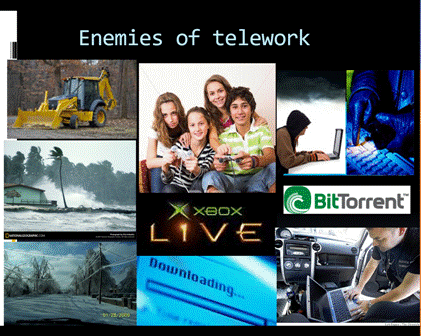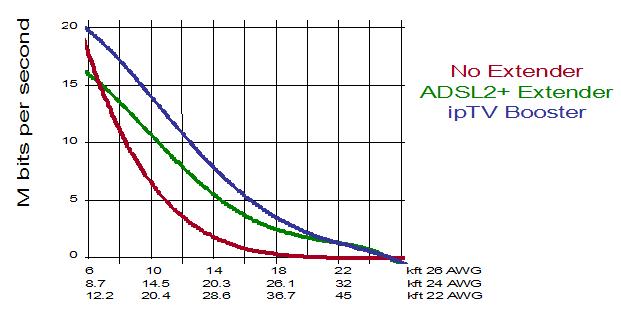Entries in Information technology (26)
Fortnite and coronavirus
In my fourteen years of pandemic lecturing, I frequently use the old Booz, Allen warning that socially distanced home workers in a pandemic could "lose the Internet."
Here's exactly what that means. Imagine an Internet scenario comparable to a fusion of Michael Jackson's death and Black Friday online sales. During the pandemic, parents are slaving over their computers, trying to do their work from home. Or one parent is working while another is trying to re-watch The Irishman on Netflix. Or The Mandalorean on Disney+. And Bryce, bored as Hell because schools are all closed, boots up the PS4 to play Fortnite (again) with friends.
Now imagine this scenario being replicated tens of thousands of times -- simultaneously -- in your own community. Now imagine that scenario magnified nationwide, to millions of homes.
Crashing game servers are the least worrisome problem. Crashing Internet service providers are the real concern.
We have no Earthly idea what will happen to the Internet if and when this scenario becomes a reality. It's a question that has not been asked since 2009. Now, one would imagine that the Internet is a far more resilient utility, with all these multiple carriers. But there is something called the Last Mile. Last Mile carriers are essentially that: telecommunications carriers who handle everybody's (or almost everybody's) common Internet traffic at one point or another within a community. From Wikipedia:
The last mile is typically the speed bottleneck in communication networks; its bandwidth effectively limits the bandwidth of data that can be delivered to the customer. This is because retail telecommunication networks have the topology of "trees", with relatively few high capacity "trunk" communication channels branching out to feed many final mile "twigs". The final mile links, being the most numerous and thus the most expensive part of the system, as well as having to interface with a wide variety of user equipment, are the most difficult to upgrade to new technology. For example, telephone trunklines that carry phone calls between switching centers are made of modern optical fiber, but the last mile is typically twisted pair wires, a technology which has essentially remained unchanged for over a century since the original laying of copper phone cables.
So now you understand the problems that can arise when Fortnite meets Netflix meets work from home plans. And since every home in America will probably be using the Last Mile (unless you have fiber to the home or satellite Internet), the potential to "lose the Internet" is there. It's just that no one knows how, when, or how bad this could be. Adding to the problem is that home Internet connections fall under the category of "best effort." Many of us would argue that "best effort" is an oxymoron. Emphasis on the "moron" part. Corporate and government networks, by contrast, usually have Service Level Agreements with their Internet and broadband partners. These agreement spell out expectations for service delivery and penalties (including financial penalties) for outages. Sadly, home users cannot get SLAs, as they are known in the industry.
CIOs, CTOs and other IT managers should anticipate these problems as their clients attempt to log in remotely. The bottlenecks from their VPN traffic will be self-limiting as to how many simultaneous remote connections they can support. Plan to manage that access in some way or another. Possibly limiting the time an employee can be online with the corporate servers. Organizations who utilize cloud technology are not immune from this Last Mile problem, but the load management is offloaded (pun intended) to the cloud provider. But prepare for some unexpected costs, just in case.
Finally, little Bryce or Amanda will ultimately get bored with Fortnite (hard to believe, true) or CoD, and eyes will wander over to your work laptop. Be aware of this and keep his (or her, appropriately) hands off the work PC! No better way to bring down a corporate network than a combination of curious child, work computer and infected Internet link. We don't need Ransomware invading a work environment during all of this other stuff.
China H7N9 update: 72 cases, 14 deaths. And the Chinese combat another viral incident (just not the one you think)
As the case numbers continue to climb, I found the most interesting article regarding another viral outbreak the Chinese are fighting -- viral social media.
This article sums it up nicely. Apparently the hot Chinese social media site is Weibo. the Chinese are learning that the Internet, and accompanying social media, are forcing transparency. Good.
Why telecommuting will probably fail in a pandemic, Vol. 6: the GAO weighs in
 Dear reader,
Dear reader,
When I say you can get bleeding-edge commentary at this blogsite, I ain't whistling Dixie! As you know if you have been following this Blogsite for any length of time, I have an ongoing series about telecommuting and pandemics. I lecture on the topic frequently, and my last lecture on the topic was at the recent CIDRAP Summit in Minneapolis. The consensus global experts on this issue are Ken McGee of Gartner and myself. I have spent more than three years working on this issue, and my pessimistic conclusions can best be summed up in my latest Powerpoint presentation, Will Telework Work? Keeping Information Technology Up If People Go Down. A slide from that presentation is above.
That presentation, which is also available via subscription at the CIDRAP Business Source Website (along with all the other presentations from that event), serves as both a blueprint for erecting a work-from-home program as well as a cautionary tale about putting too much reliance in telework as a truly viable means of getting work done while keeping oneself (or hisownself, as Joe R. Lansdale would say) out of the office.
Now, the federal Government Accountability Office(HA! What an oxymoron!) has produced a document which pretty much parrots everything I have been saying for the past three years. First, please go back and search this Blogsite for the keyword "telecommuting" and read my prior blogs on the topic. I'll wait.
Back so soon?! Most excellent. Now let us look at the GAO report and analyze it. Sure enough, it mentions everything we have been talking about. Namely, Junior playing XBoxLive while Mom and Dad are trying to access the corporate mainframe. All this, from home cable and DSL routers that are not nearly as fault-tolerant as the T-1 and T-3 connections that are the norm for corporate offices.
You see, cable is the "party line" of the Internet. A cable modem connection is not a "home run" back to the local telco office that a T-1 or T-3 is. Sure, at night you might run a 2wire.com speed test and get 6 megabits of throughput, but that is at night, when things are quieter, Internet-wise. But as connections become more frequent, and the multiple demands on bandwidth accelerate, that cable bandwidth gets divided -- and devoured -- in a hurry. And you are sharing that cable Internet pipeline with everyone else in your neighborhood and adjacent neighborhoods who also have cable.
DSL is supposed to be a "home run," or direct cable run back to the CO, or Central Office of the telco, but from my own personal experience I am not sure that is truly so. DSL has made some huge strides, including the configuration of special DSL repeaters, in order to extend its availability beyond the 10,000 feet or so from the Central Office that was the original limit of DSL technology.
But those repeaters come with a significant gradual performance hit -- a loss of bandwidth the further out you get from the CO. For that reason, and because these repeaters are shared with other users, I cannot say DSL is a "home run" back to the telco. For those of you who want to "geek out" on a Wikipedia chart illustrating this DSL issue, here ya go!

See, excitement abounds here!
Back to the issue at hand. Cable and DSL are consumer technologies, and are not nearly as reliable as good old-fashioned T-1 lines. You cannot as a general rule purchase priority restoration for cable or DSL technologies, meaning in a natural disaster these solution providers are the "last ones up the pole" to fix problems, after the electric utility and the traditional telco. So forget about cable or DSL robustness when it comes to these consumer solutions -- especially during hurricane season, or during winter in the frigid North. Or during a pandemic, when their (younger) workforce will be as strapped as yours.
There are a few quotes from the GAO study that need to be highlighted. First, from page i:
Increased demand during a severe pandemic could exceed the capacities of Internet providers’ access networks for residential users and interfere with teleworkers in the securities market and other sectors, according to a DHS study and providers (see figure below). Private Internet providers have limited ability to prioritize traffic or take other actions that could assist critical teleworkers. Some actions, such as reducing customers’ transmission speeds or blocking popular Web sites, could negatively impact e-commerce and require government authorization. However, DHS has not developed a strategy to address potential Internet congestion or worked with federal partners to ensure that sufficient authorities to act exist. It also has not assessed the feasibility of conducting a campaign to obtain public cooperation to reduce nonessential Internet use to relieve congestion. DHS also has not begun coordinating with other federal and private sector entities to assess other actions that could be taken or determine what authorities may be needed to act.
Next, from pages 14-16:
Increased use of the Internet by students, teleworkers, and others during a severe pandemic is expected to create congestion in Internet access networks that serve metropolitan and other residential neighborhoods. For example, localities may choose to close schools and these students, confined at home, will likely look to the Internet for entertainment, including downloading or “streaming” videos, playing online games, and engaging in potential activities that may consume large amounts of network capacity (bandwidth). Additionally, people who are ill or are caring for sick family members will be at home and could add to Internet traffic by accessing online sites for health, news, and other information. This increased and sustained recreational or other use by the general public during a pandemic outbreak will likely lead to a significant increase in traffic on residential networks. If theaters, sporting events, or other public gatherings are curtailed, use of the Internet for entertainment and information is likely to increase even more. Furthermore, the government has recommended teleworking as an option for businesses to keep operations running during a pandemic. Thus, many workers will be working from home, competing with recreational and other users for bandwidth.
During a pandemic, congestion is most likely to occur in the traffic to or from the aggregation devices that serve residential neighborhoods, interfering with teleworkers’ and others’ ability to use the Internet.
Congestion affecting home users is likely to occur because the parts of providers’ DSL, cable, satellite, and other types of networks that provide access to the Internet from residential neighborhoods are not designed to carry all the potential traffic that users could generate in a particular neighborhood or that all connect to a particular aggregating device for efficiency and cost reasons. Providers do not build networks to handle 100 percent of the total traffic that could be generated because users are neither active on the network all at the same time, nor are they sending maximum traffic at all times.
I will spare you the rest, which is basically a call to action on behalf of DHS to figure out how it can parcel out bandwidth in a pandemic. Good luck with that one! Who is to say that a teleworker for a state department of emergency management cannot get priority access because s/he is simply on a DSL or cable modem from home?
Dirty Little Secret: Key government operatives carry a card with them. This card guarantees them dial tone, if they can achieve dial tone. Once they have dial tone, a call to the secret number gives them priority access to the phone grid.
Dirty Little Secret 2: If you do not have dial tone, do not hang up the phone. Eventually, if there is dial tone to be had, you will get dial tone. Hanging up actually means you'll lose out in the hunt for dial tone.
So maybe we need an Internet Access Priority Card. Or a priority encryption scheme, or a priority Verisign authentication keyfob (there, that'll work). If you are a government or critical infrastructure type, you could plug in this USB thumbdrive with the appropriate levels of security, encryption and authentication, and you could merrily compute while your neighbors stew over speeds reminiscent of 1200 baud modems. If you don't know the word "baud," you are a pup.
The report is 77 pages, and is worth the read if you ever thought you could just send employees home with a laptop and keep the business humming. then go over to the link and download my Powerpoint on the topic, and get smart quick.
Nice to see the government agreeing with my take on things.
Make plans to attend CIDRAP Summit on H1N1 preps
 CIDRAP stands for the Center for Infectious Disease Research and Policy at the University of Minnesota. Its director is the world-famous Dr. Michael Osterholm. Dr. Osterholm advises everyone from the White House to Oprah on infectious disease. Dr. Mike is also an expert on bioterrorism and has advised DHS many times on lethal bio-engineered pathogens. He wrote a book, Living Terrors: What America Needs to Know to Survive the Coming Bioterrorist Catastrophe. I should point out that Dr. Osterholm wrote this a year before the anthrax attacks of October, 2001.
CIDRAP stands for the Center for Infectious Disease Research and Policy at the University of Minnesota. Its director is the world-famous Dr. Michael Osterholm. Dr. Osterholm advises everyone from the White House to Oprah on infectious disease. Dr. Mike is also an expert on bioterrorism and has advised DHS many times on lethal bio-engineered pathogens. He wrote a book, Living Terrors: What America Needs to Know to Survive the Coming Bioterrorist Catastrophe. I should point out that Dr. Osterholm wrote this a year before the anthrax attacks of October, 2001.
The upcoming summit is titled "Keeping the World Working During the H1N1 Pandemic -- protecting employee health, critical operations and customer relations." Its focus is on those final steps that corporations, businesses and governments need to take to ensure they do not implode when the second and third waves of H1N1 traverse the globe.
The Summit is September 22 and 23, 2009, in Minneapolis.
Both Avian Flu Diary's Mike Coston and I are presenters at the Summit. I am presenting (twice) on the topic of final IT preps for the pandemic. Mike is appearing with NBC's superb science correspondent Robert Bazell.
Please go up onto the Summit's Website and check out the agenda, speakers and registration information. I strongly encourage you to try to attend this event. Or try and send people to this conference. Think "Last Chance for Gas" just before you drive through the desert.
This conference truly is the Last Chance for Preps before Wave 2 hits.
SitRep cyberspace: I'm now on Twitter
You Twitterheads, or whatever you people call yourselves, can now get my comments and links on the 140-character social networking site. I'm something like "@scottwmcpherson" or something like that.
You can also "follow me" from the link on the left side of this Blogsite. Just scroll down to Twitter.
You'll get a lot of updates during the business day. At night, I'm a normal human being again, reading Marvel comics, zombie novels or watching Fringe with the wife. Isn't that what normal people do? Well, we also watch American Idol (Adam's gonna win it) and Dancing with the Stars (Gilles/Lil' Kim tossup) so I'm not completely out there.....
Hurm.
